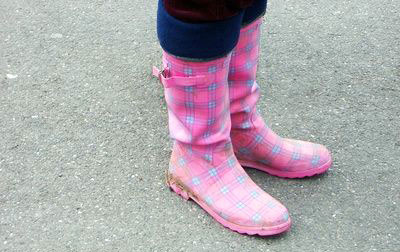The Boot Emergency: A Tale of Muddy Mayhem
I was blissfully stomping through a muddy trail, reveling in the squelch of my boots in the mire. Suddenly, I felt a sharp twinge and realized with horror that a gaping hole had opened up in the sole of my beloved boots. Adrenaline surged as I teetered on the brink of disaster, my feet threatened by the icy sludge below.

Image: bootmoodfoot.com
Not one to let a hole in my boots ruin my adventure, I decided to take matters into my own hands. Little did I know that this unexpected mishap would lead me on a delightful journey of boot repair, transforming me into a master of rubber boot restoration.
The Anatomy of a Hole: Understanding the Damage
Before attempting repairs, it’s crucial to assess the extent of the damage. The size, shape, and location of the hole will determine the best course of action. If the hole is small and on the upper part of the boot, a simple patch may suffice. However, if the hole is large or on the sole, a more substantial approach is necessary.
Consider the material of your boots. Most rubber boots are made from natural or synthetic rubber, which have different repair requirements. Natural rubber requires a specialized adhesive, while synthetic rubber can be fixed with a wider range of materials.
Materials and Tools for Boot Restoration
Gather the necessary materials and tools for your boot repair mission. Here’s what you’ll need:
- Sandpaper or a wire brush
- Rubber cement (for natural rubber) or contact adhesive (for synthetic rubber)
- A rubber patch or scrap rubber
- Scissors
- A clean cloth
- Optional: Shoe goo or a tire repair kit
Step-by-Step Repair Guide
- Prepare the surface: Clean the area around the hole with sandpaper or a wire brush to remove any dirt or debris. This will ensure a strong bond between the adhesive and the boot.
- Apply the adhesive: Follow the manufacturer’s instructions for applying the adhesive. Typically, you’ll apply a thin layer of adhesive to the boot and the patch.
- Attach the patch: Carefully align the patch over the hole and press it down firmly. Use a clean cloth to smooth out any air bubbles or wrinkles.
- Secure the patch: Place the boot in a warm, dry place and allow the adhesive to cure completely. This may take several hours or even overnight.
- Reinforce the repair: For larger holes or areas of heavy wear, you can reinforce the repair by applying shoe goo or a tire repair kit around the edges of the patch.

Image: letsfixit.co.uk
Tips and Expert Advice for Boot Repair
Here are some additional tips to ensure a successful boot repair:
- Use a patch that is slightly larger than the hole: This will provide a stronger bond and prevent the hole from spreading.
- Allow the adhesive to cure completely: Do not put on your boots until the adhesive has had ample time to dry.
- If the hole is on the sole of your boots, consider using a flexible patch: This will prevent the patch from cracking or peeling when you walk.
- Inspect your boots regularly for signs of damage: Small holes or tears can be easily repaired if caught early.
FAQs on Rubber Boot Repair
Q: What is the best adhesive for rubber boots?
A: For natural rubber boots, use a rubber cement adhesive. For synthetic rubber boots, you can use contact adhesive, shoe goo, or even a tire repair kit.
Q: How long does it take for the adhesive to cure?
A: Cure time varies depending on the adhesive used. Allow several hours or overnight for complete drying.
Q: Can I repair a hole in rubber boots with duct tape?
A: While duct tape can provide a temporary fix, it is not a permanent solution. Duct tape will eventually peel off or lose its adhesive properties.
How To Fix A Hole In Rubber Boots
Conclusion: A Farewell to Holes and a Promise of Adventure
Armed with the knowledge and techniques outlined in this guide, you can tackle any hole in your rubber boots with confidence. Remember, a little bit of repair work can extend the life of your boots and keep your feet dry and comfortable for all your future adventures. So, step into your repaired boots, embrace the mud, and conquer the trails with newfound confidence.
Are you ready to elevate your rubber boot repair skills? Share your tips and experiences in the comments below and let’s create a community of boot-repair enthusiasts. Together, we can keep our boots in tip-top shape and make every adventure a resounding success.